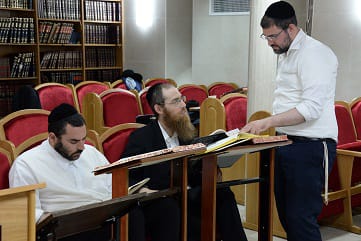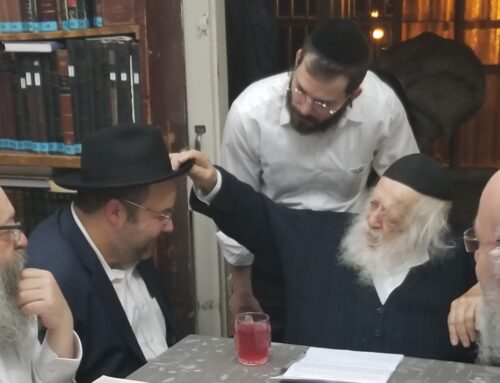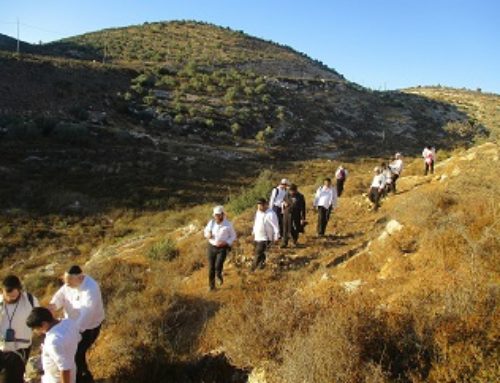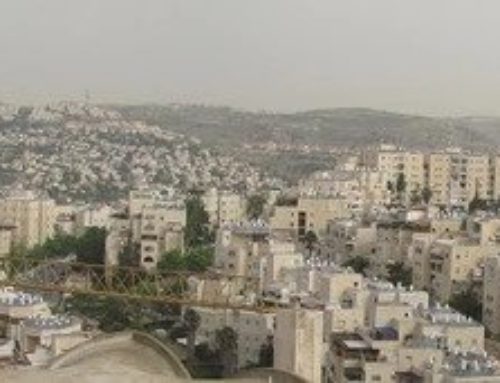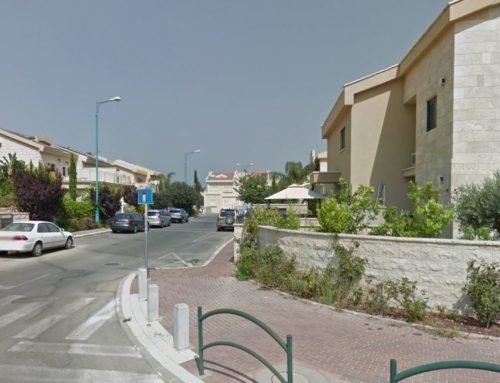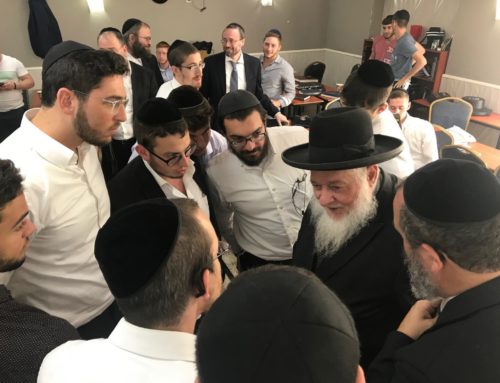A New Makom Torah
R’ Dovid Hillel Bricks, HaCarmel, Chaifa (Haifa)
Between the ages of six and eighteen, I lived with my family in Migdal HaEmek. We had first come from New York to Moshav Matityahu, an agricultural moshav at the time, where we lived for about a year and a half, before moving to Rav Nachman Bulman zt”l‘s kehillah up north. Many Americans who came to Eretz Yisroel at the time and were looking for an American-style kehillah, with a well-respected and beloved rav, were attracted to Rav Bulman’s kehillah.
The kehillah included a kollel avreichim, and my father eventually became the rosh kollel. The kehillah included also many baalebatim, as well as some Israelis who enjoyed the atmosphere. As for mosdos chinuch though, the kehillah children would commute to other chadorim and schools in the general area, such as the Chinuch Atzmo’i cheider in Kfar Gideon, or to a cheider in Chaifa. Though the kehillah eventually fell apart (perhaps the time was just not yet ripe for such an endeavor), I, and everyone I know from there, have very good memories of our time there.
When, for what I think were parnassa reasons, my parents left for America, they were sure it was only temporary. They knew they would eventually come back, though that has happened only recently, after two decades over which all their children married and established their homes here in Eretz Yisroel. They followed one of my younger siblings to the community of Giv’at HaMoreh in Afula.
At the time my parents left, I was eighteen years old, so I stayed in Eretz Yisroel and went to Yeshivas Yad Aharon in Yerushalayim. After getting married, we moved to Chaifa, where my wife’s family lived. My wife grew up in Hadar, the Chareidi neighborhood in Chaifa. Hadar is home to a large and respectable Litvish community, as well as some Chassidish communities, including Belz, Vizhnitz, and Seret-Vizhnitz. At the time, it was a relatively small community; the Litvish cheider had maybe 15-20 kids in a class. Since then there has been substantial growth in the community, and it has turned into a significant Chareidi population center.
Neve Sha’anan is an additional neighborhood in Chaifa with a Chareidi presence. It is an upper-class and mostly secular neighborhood, but a small Chareidi community formed around the yeshiva there, Yeshivas Nachlas HaLevi’im. Over the years that community expanded to include many Chareidi families and spread over a larger area. It is not centered only around the yeshiva anymore, and includes mosdos chinuch and kollelim not associated with the yeshiva.
We first settled in Neve Sha’anan, where we lived for about fifteen years. At the time we came, there were about eighty families there, most of which were young couples with small children. There are now about 200 Chareidi families living there. Several years ago we moved to the HaCarmel neighborhood, which, as its name indicates, sits atop the Carmel mountain. It is a quiet neighborhood with nice weather, a lot better than the rest of Chaifa, with a breeze coming in from the Mediterranean and a breathtaking view.
The small Chareidi community here in HaCarmel was initiated by a resident of Monsey, R’ Yeshaya Benedict, a visionary with the idea of creating a new makom Torah in Eretz Yisroel. The general populace is made up of middle to upper-class secular and traditional Jews of various levels of observance, some of whom were not exposed to Chareidim until the establishment of the kehillah. Seeing families of bnei Torah definitely has a positive impact on them. There is only one shul in the neighborhood, and members of the kehillah daven together with all the local shul-goers. The kollel is also housed in the shul, and aside from the kehillah members, there are several avreichim who come in from Hadar to learn in the kollel. There is also a huge shul in the nearby Ramat HaTishbi neighborhood. That shul may have been full many years ago but is now left with about thirty congregants. There is another smaller shul also within reasonable distance, where we occasionally go to give shiurim, and an additional small kiruv shul.
As for raising children in such an atmosphere, due to my personal experience of growing up in Migdal HaEmek I wasn’t concerned about living next to irreligious Jews. In such places, children grow up knowing that there is “us” and “them,” and we are two different worlds, so it’s not so mashpia. I had also heard from a friend who years ago had asked Rav Wolbe zt”l about living in Neve Sha’anan, which did not have a Chareidi street atmosphere. Rav Wolbe told him that the chinuch in such places comes from the home, and not from the street.
Aside from the small kehillah of avreichim – we are only seven families here today – there are another few families of shomrei Torah umitzvos in the neighborhood, mostly mitchazkim (people getting stronger in their Torah observance), some of whom send their children to the Chareidi mosdos in Hadar. There is no pressure here to conform to a certain “type.” Everyone here gets along, and people who might not fit in the Israeli Chareidi “box,” such as some American Chareidim, might fare better in such a relaxed atmosphere. There are some American Chareidim who came many years ago to the Hadar neighborhood, but they are fully integrated into the regular Israeli Chareidi kehilla there.
One thing that allows such a small kehillah to exist is the fact that we have another two Chareidi kehillos, Hadar and Neve Sha’anan, within reasonable distance, where there are all the amenities necessary for frum living, including mosdos, kosher mehadrin shopping, etc.
Our kehillah is looking to expand. Anyone who feels that a community like ours might suit them is more than welcome to join!
Kiruv Potential
The kehillah is not focused on kiruv, but kiruv just happens here naturally. The avreichim here in general do have an inclination for kiruv, even if they’re learning in kollel all day and not actively doing outreach. Some give shiurim to the locals or otherwise create a positive kesher with them.
There is much active kiruv work that can be done here, and the local avreichim would be happy to be of assistance to anyone who would be interested in pursuing such avodas hakodesh here.
This article is part of our Haaretz Hatovah series featuring Yidden living in, settling, and building up Eretz Yisroel. For more information please contact us at [email protected] or visit naavakodesh.org/haaretz-hatovah
Reprinted with permission from Yated Ne’eman

